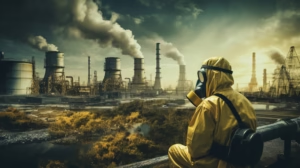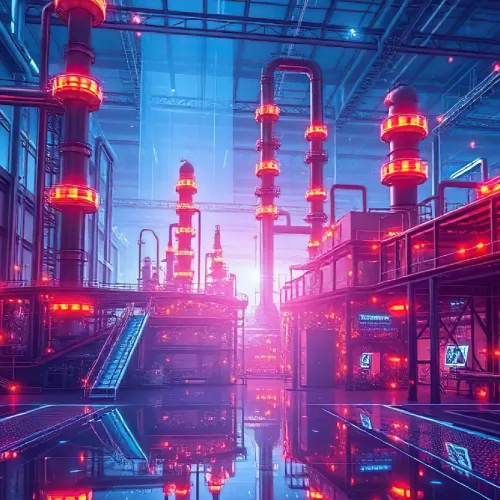Per- and polyfluoroalkyl substances (PFAS) are a group of synthetic chemicals that find wide use due to their water and grease resistant properties. These man-made chemicals have earned the nickname “forever chemicals” due to their persistence in the environment and living organisms. Their potential health effects combined with their persistence in the environment make this an issue of high concern. One of the major problems is how PFAS bioaccumulate into the food chain, leading to the exposure of different kinds of wildlife, including human beings.
What are PFAS?
PFAS have strong bonds between carbon and fluorine, which make them persist in the environment. These “forever chemicals” do not break down easily.
Instead, they can stay in the environment for decades or even centuries. They resist heat, sunlight, and many natural processes. As a result, they occur widely in the environment. They can travel long distances through water and air, contaminating remote areas far from their source.
Common sources of PFAS Chemicals
PFAS chemicals are now everywhere in the world and are used in thousands of consumer products and many industrial sectors. In addition, their good properties that repel water and oil are widely used. This widespread use has also led many of them to exist in our environment.

Understanding the common sources of PFAS chemicals helps us know where we may be exposed and enables the design of strategies to reduce its impact. Some of the most prevalent sources include:
- Industrial discharges into water bodies
- Leaching from landfills
- Use of PFAS containing firefighting foams
- Atmospheric deposition from industrial emissions
- Application of bio solids (treated sewage sludge) to agricultural land
Bioaccumulation in the Food Chain
Bioaccumulation is the gradual accumulation of substances, such as chemicals or pollutants, in an organism over time. This occurs when an organism absorbs the substance at a rate faster than it can be eliminated or metabolized.
PFAS chemical enter the food chain through contaminated water and soil. First, aquatic organisms absorb and store these chemicals in their tissues. Meanwhile, on land, plants uptake it from polluted soil. Subsequently, herbivores consume these contaminated plants, introducing PFAS into the infected food chain. As smaller fish ingest contaminated water or prey, they accumulate PFAS. Then, larger predators consume these contaminated fish, further concentrating PFAS in their bodies. Consequently, PFAS levels emphasizes as they move up the food chain, reaching their highest concentrations in top predators.
Health Impacts of PFAS Bioaccumulation

Humans are at the top of the food chain and can be exposed to PFAS chemicals through the intake of contaminated fish, dairy products, meat, and crops. Drinking water is also an important source of risk in areas with PFAS contamination. The bioaccumulation of PFAS in the food chain has serious health implications. Studies have linked PFAS exposure to various adverse health effects, including:
- Cancer: Increased risk of kidney and testicular cancer.
- Hormonal Disruption: Interference with the body’s endocrine system, affecting hormone levels.
- Immune System Suppression: Reduced effectiveness of vaccines and higher susceptibility to infections.
- Developmental Issues: Potential impacts on fetal development and growth in children.
- Liver Damage: Altered liver function and increased cholesterol levels.
Environmental impact
Beyond human health, PFAS bioaccumulation also impacts wildlife. Predatory species at the top of the food chain, such as eagles, otters and polar bears, can suffer from high PFAS levels. This can lead to fertility issues, hormonal imbalances, and increased mortality. Additionally, the persistence of PFAS in ecosystems can disrupt entire food webs, leading to long-term ecological consequences.
Conclusion
PFAS bioaccumulation is an important environmental and public health issue. These persistent chemicals build up in the food chain, posing a risk to both wildlife and humans. By knowing the ways of PFAS bioaccumulation helps us recognize the importance of reducing their use, improving waste management practices, and enforcing strict regulations. By taking these steps, we can reduce the impact of PFAS on our health and the environment.




